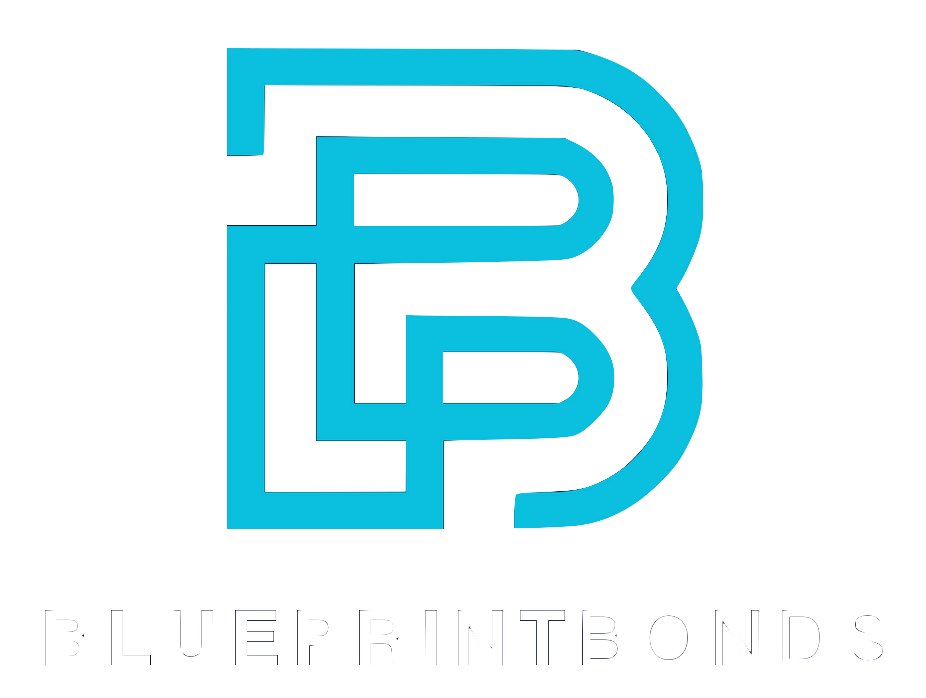Applying for a bond might seem like a straightforward process from the outside, but beneath the surface lies a complex web of evaluations, regulations, and market dynamics. Whether you're seeking a surety bond for a construction project or investing in corporate bonds, understanding what happens behind the scenes can help demystify the process and give you confidence in your financial decisions.
In recent years, the bond market has seen significant developments, including enhanced disclosure standards and technological advancements that shape how bonds are issued, evaluated, and traded. For example, the SEC’s new corporate bond disclosure standards introduced in 2025 now influence reporting practices for about 20% of new issuers, reflecting a shift toward greater transparency and investor protection.
The Initial Application and Underwriting Process
When you apply for a bond, the first step is the underwriting process. This is where the bond issuer or surety company assesses the risk associated with guaranteeing your obligations. Underwriters analyze various factors such as your financial history, creditworthiness, and the specifics of the project or obligation the bond will cover.
For surety bonds, which are common in industries like construction, the underwriting process is particularly rigorous. The surety provider evaluates your business’s financial stability, experience, and ability to fulfill contractual obligations. This evaluation helps the surety determine the bond premium and whether to approve the bond at all.
Advanced technologies have begun playing a crucial role in this phase. According to The Insight Partners, surety bond providers are increasingly leveraging technology to enhance risk management practices and improve customer engagement. This means faster decisions and more tailored bond offerings for applicants. The use of artificial intelligence and machine learning algorithms allows underwriters to analyze vast amounts of data quickly, identifying trends and potential risks that may not be immediately apparent through traditional methods. As a result, applicants can expect a more streamlined process that not only expedites approvals but also aligns more closely with their specific needs and circumstances.
Risk Assessment and Credit Checks
During underwriting, credit checks are a critical component. The surety company or bond issuer will review your credit score, outstanding debts, and payment history. This helps them gauge the likelihood that you will meet your obligations without defaulting. A strong credit profile can result in lower premiums and smoother approval.
Additionally, the underwriter may consider external factors such as market conditions and regulatory changes. For instance, the bond market is influenced by government policies and economic trends that can affect risk levels and pricing. Underwriters often keep a close eye on industry-specific developments, such as fluctuations in material costs or labor shortages, which could impact a project's viability. Understanding these dynamics helps ensure that the bond issued reflects the true risk associated with the obligation, safeguarding both the surety and the applicant.
Documentation and Compliance
Applicants must provide detailed documentation, including financial statements, business licenses, and project contracts. This documentation supports the underwriting process and ensures compliance with regulatory requirements. With the SEC’s enhanced disclosure standards now affecting a growing portion of issuers, accurate and transparent reporting has never been more important. Furthermore, the documentation process often includes a thorough review of past projects, showcasing your track record of successful completions. This not only builds trust with the surety provider but also highlights your expertise and reliability in your field.
In addition to standard documentation, some surety companies may require additional information, such as personal financial statements from business owners or key stakeholders. This holistic view of financial health allows underwriters to assess not just the business's capabilities but also the personal financial responsibility of those at the helm. As the landscape of risk assessment continues to evolve, ensuring that all aspects of an applicant's financial profile are thoroughly vetted is crucial for both parties involved.
Market Dynamics and Bond Pricing
The pricing of bonds is influenced by a complex interplay of market forces. When a bond is issued, its price and yield are determined based on factors such as interest rates, credit risk, and market liquidity. Behind the scenes, market makers and investors interact continuously to balance supply and demand.
A recent study using a bespoke agent-based model demonstrated that greater diversity among market participants enhances liquidity in government bond markets. It also found that reducing the costs associated with market-making can improve overall market stability, which benefits both issuers and investors alike. This insight highlights the importance of a vibrant and diverse market ecosystem in ensuring fair pricing and efficient trading.
For those applying for bonds, understanding these dynamics can shed light on why bond prices fluctuate and how market conditions might impact the terms offered to you. The bond market is not merely a passive environment; it is a dynamic arena where economic indicators, geopolitical events, and even investor sentiment can lead to rapid changes in pricing. For instance, an unexpected shift in monetary policy by central banks can lead to immediate adjustments in yields, affecting both new issuances and existing bonds. As such, staying informed about broader economic trends is crucial for bond applicants.
Impact of Market Liquidity
Liquidity refers to how easily bonds can be bought or sold without significantly affecting their price. High liquidity means investors can quickly enter or exit positions, which tends to lower risk and improve pricing. Conversely, low liquidity can increase volatility and make bonds less attractive.
Market liquidity is influenced by the number and diversity of participants. The agent-based model study underscores that diverse market-makers contribute to healthier liquidity, which in turn supports more stable bond pricing. Additionally, liquidity can be affected by external factors such as economic crises or shifts in investor confidence. During turbulent times, even traditionally liquid markets can experience sudden drops in liquidity, leading to wider bid-ask spreads and increased costs for investors. Understanding these nuances can help bond applicants navigate potential risks associated with liquidity fluctuations.
Regulatory Environment and Its Influence
Regulations play a pivotal role in shaping bond markets. The SEC’s enhanced disclosure standards introduced in 2025 aim to increase transparency and protect investors. These regulations require issuers to provide more detailed information about their financial health and bond terms, which helps investors make informed decisions.
For applicants, this means that the bonds they seek or issue are subject to stricter scrutiny, which can affect approval timelines and documentation requirements. However, these measures ultimately contribute to a more trustworthy market environment. Furthermore, regulatory changes can also impact the types of bonds available to investors, as new rules may encourage the issuance of green bonds or other socially responsible investment vehicles. This shift not only reflects changing investor preferences but also highlights the growing importance of sustainability in the bond market. As regulations evolve, staying abreast of these changes can provide applicants with strategic advantages in selecting the right bonds that align with their investment goals and ethical considerations.
Technological Innovations in Bond Issuance and Management
Technology is transforming the bond industry from issuance to post-sale management. Digital platforms now facilitate faster bond applications, automated underwriting, and real-time monitoring of bond performance. These innovations reduce administrative burdens and improve accuracy. As a result, issuers can focus more on strategic decision-making rather than getting bogged down by cumbersome paperwork and manual processes. The shift towards digitization also allows for greater scalability, enabling smaller issuers to access the bond market more easily and compete with larger entities.
Moreover, advanced analytics and AI-driven tools enable surety providers and bond issuers to better assess risk and customize bond products. This technological shift is part of why the surety market is projected to grow significantly over the next several years, reflecting increased efficiency and customer-centric approaches. In addition, the integration of machine learning algorithms allows for continuous improvement in risk assessment models, adapting to new data trends and market conditions, which further enhances the reliability of bond offerings.
Automated Underwriting and Risk Models
Automated underwriting systems use algorithms to analyze applicant data quickly and consistently. These systems can flag potential risks, verify documentation, and even suggest optimal bond terms. This reduces human error and accelerates the approval process. By leveraging historical data and predictive analytics, these systems can also provide insights into borrower behavior, allowing for more informed lending decisions. As a result, issuers can tailor their bond products to meet specific market demands while minimizing exposure to potential defaults.
Additionally, agent-based modeling, as highlighted in recent research, is being applied to simulate market behaviors, helping issuers and investors anticipate market reactions and adjust strategies accordingly. This modeling approach allows for a more nuanced understanding of how various factors—such as economic indicators, interest rate changes, and regulatory shifts—can impact bond performance, thus enabling stakeholders to make proactive adjustments to their portfolios.
Blockchain and Smart Contracts
Emerging technologies like blockchain and smart contracts hold promise for the bond market. Blockchain can provide immutable records of bond transactions, enhancing transparency and reducing fraud risk. Smart contracts can automate payments and compliance checks, ensuring that bond terms are executed precisely as agreed. This level of automation not only reduces operational costs but also minimizes the risk of disputes between parties, as all terms are clearly defined and executed without the need for intermediaries.
While these technologies are still evolving, their potential to streamline bond issuance and management is considerable, making the process more secure and efficient for all parties involved. Furthermore, the decentralized nature of blockchain technology can democratize access to the bond market, allowing a wider range of investors to participate and fostering greater liquidity. As more institutions explore the integration of these technologies, we may witness a fundamental shift in how bonds are issued, traded, and managed, leading to a more robust and accessible financial ecosystem.
What Happens After Approval: Bond Issuance and Ongoing Management
Once your bond application is approved, the issuance process begins. The bond is formally created, and the terms are documented in legal agreements. For surety bonds, this means the surety guarantees your obligations to the obligee (the party requiring the bond). This initial phase is crucial as it sets the stage for the entire bond lifecycle, ensuring that all parties have a clear understanding of their responsibilities and expectations. The legal agreements typically outline the bond amount, the duration of coverage, and the specific obligations that must be met, providing a framework for accountability.
After issuance, ongoing management includes monitoring compliance with bond conditions, making premium payments, and handling any claims that may arise. If a claim is filed, the surety investigates and may pay the obligee if you fail to meet your obligations, subsequently seeking reimbursement from you. This process can be intricate, as it often involves gathering documentation, communicating with various stakeholders, and potentially negotiating settlements. Regular reviews of your compliance status and financial health can help mitigate risks and ensure that you remain in good standing with the surety and the obligee.
This lifecycle requires careful attention and communication between all parties to ensure smooth operations and minimize risks. Effective communication is key; maintaining an open dialogue with your surety can facilitate quicker resolutions to any issues that may arise. Additionally, it’s important to keep abreast of any changes in regulations or market conditions that could impact your obligations under the bond.
Market Growth and Future Outlook
The bond market continues to expand rapidly. According to Business Research Insights, the global bond market size is projected to reach an astonishing USD 534,800 billion by 2033, growing at a compound annual growth rate (CAGR) of 12.7% from 2025 to 2033. This growth reflects increasing demand for bonds as investment vehicles and risk management tools. Factors contributing to this trend include low-interest rates, a growing appetite for fixed-income securities among institutional investors, and a heightened focus on sustainable investing, which has led to the rise of green bonds and social bonds.
Similarly, the global bond tester market, which supports quality assurance in bond issuance and trading, is expected to maintain steady growth, highlighting ongoing innovation and market maturation. As technology continues to evolve, tools that enhance transparency, streamline the issuance process, and improve risk assessment will become increasingly important. The integration of artificial intelligence and blockchain technology into bond trading platforms is anticipated to revolutionize the market, making transactions more efficient and secure.
Investor and Issuer Considerations
For investors, understanding the behind-the-scenes processes can help in evaluating bond risks and returns more effectively. Investors should consider not only the yield but also the creditworthiness of the issuer and the specific terms of the bond agreement. Additionally, diversifying a bond portfolio can mitigate risks associated with interest rate fluctuations and credit events. Knowledge of economic indicators and market trends can further empower investors to make informed decisions.
For issuers and applicants, awareness of underwriting criteria, market conditions, and regulatory requirements can improve preparedness and increase the likelihood of successful bond acquisition. Engaging with financial advisors and bond market experts can provide valuable insights into structuring bonds that align with investor expectations. Staying informed about technological advancements and regulatory changes is essential for navigating the evolving bond landscape confidently. Moreover, proactive engagement with stakeholders can foster stronger relationships and enhance the issuer's reputation in the market, ultimately leading to more favorable terms in future bond issuances.
Conclusion: Demystifying the Bond Application Journey
Applying for a bond involves much more than filling out forms and waiting for approval. It is a multifaceted process encompassing risk assessment, regulatory compliance, market dynamics, and technological innovation. The evolving regulatory landscape, such as the SEC’s enhanced disclosure standards, and the growing use of advanced technologies are shaping a more transparent, efficient, and stable bond market.
Whether you are seeking a surety bond or investing in corporate bonds, understanding these behind-the-scenes activities can empower you to make better decisions and navigate the bond market with greater confidence. As the market continues to grow and innovate, staying informed will remain key to success.
For those interested in deeper insights, resources like Global Growth Insights provide comprehensive market analyses that can further illuminate the trends shaping the bond industry today.




